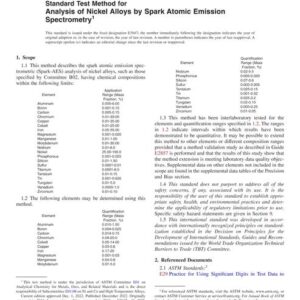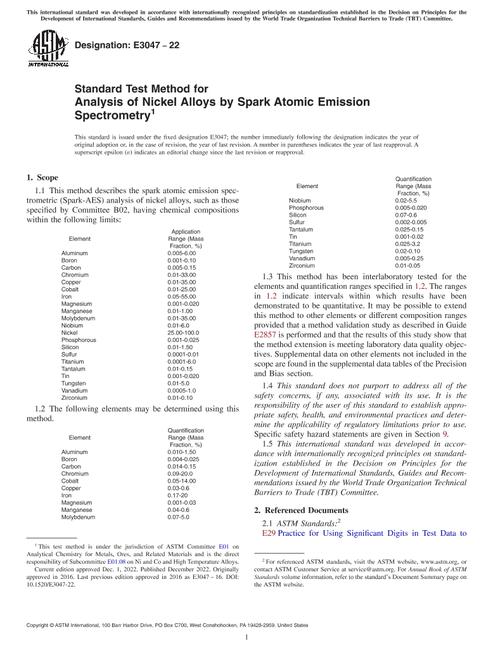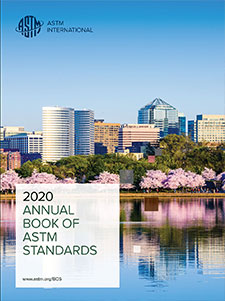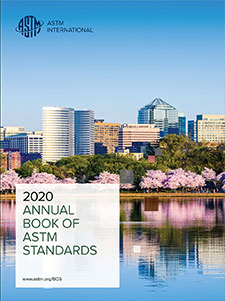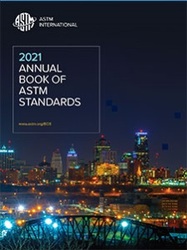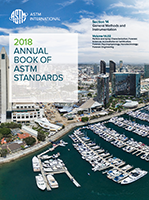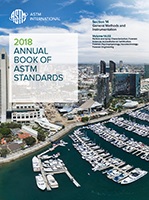Description
1.1 This method describes the spark atomic emission spectrometric (Spark-AES) analysis of nickel alloys, such as those specified by Committee B02, having chemical compositions within the following limits:
Element Application Range (Mass Fraction, %) Aluminum 0.005-6.00 Boron 0.001-0.10 Carbon 0.005-0.15 Chromium 0.01-33.00 Copper 0.01-35.00 Cobalt 0.01-25.00 Iron 0.05-55.00 Magnesium 0.001-0.020 Manganese 0.01-1.00 Molybdenum 0.01-35.00 Niobium 0.01-6.0 Nickel 25.00-100.0 Phosphorous 0.001-0.025 Silicon 0.01-1.50 Sulfur 0.0001-0.01 Titanium 0.0001-6.0 Tantalum 0.01-0.15 Tin 0.001-0.020 Tungsten 0.01-5.0 Vanadium 0.0005-1.0 Zirconium 0.01-0.10
1.2 The following elements may be determined using this method.
Element Quantification Range (Mass Fraction, %) Aluminum 0.010-1.50 Boron 0.004-0.025 Carbon 0.014-0.15 Chromium 0.09-20.0 Cobalt 0.05-14.00 Copper 0.03-0.6 Iron 0.17-20 Magnesium 0.001-0.03 Manganese 0.04-0.6 Molybdenum 0.07-5.0 Niobium 0.02-5.5 Phosphorous 0.005-0.020 Silicon 0.07-0.6 Sulfur 0.002-0.005 Tantalum 0.025-0.15 Tin 0.001-0.02 Titanium 0.025-3.2 Tungsten 0.02-0.10 Vanadium 0.005-0.25 Zirconium 0.01-0.05
1.3 This method has been interlaboratory tested for the elements and quantification ranges specified in 1.2. The ranges in 1.2 indicate intervals within which results have been demonstrated to be quantitative. It may be possible to extend this method to other elements or different composition ranges provided that a method validation study as described in Guide E2857 is performed and that the results of this study show that the method extension is meeting laboratory data quality objectives. Supplemental data on other elements not included in the scope are found in the supplemental data tables of the Precision and Bias section.
1.4 This standard does not purport to address all of the safety concerns, if any, associated with its use. It is the responsibility of the user of this standard to establish appropriate safety, health, and environmental practices and determine the applicability of regulatory limitations prior to use. Specific safety hazard statements are given in Section 9.
1.5 This international standard was developed in accordance with internationally recognized principles on standardization established in the Decision on Principles for the Development of International Standards, Guides and Recommendations issued by the World Trade Organization Technical Barriers to Trade (TBT) Committee.

